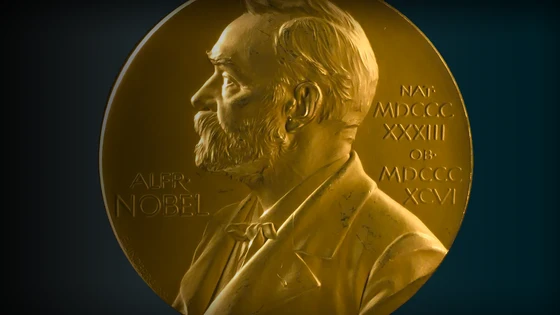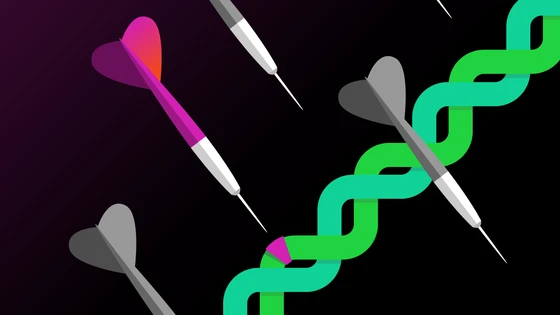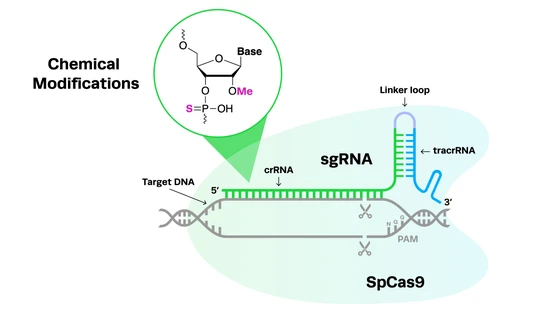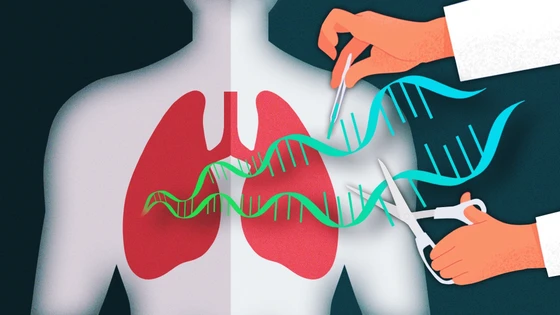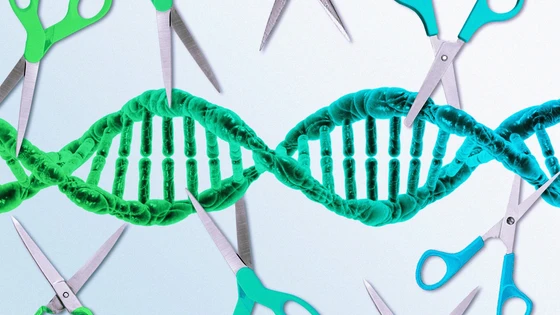Contents
Since 1901, Nobel Prizes have been awarded to individuals with outstanding achievements in physics, chemistry, physiology or medicine, literature, and for their work in peace. The field of gene editing has been no exception. There have been several breakthroughs throughout the history of gene editing, and many key scientists played a pivotal role in these milestones.
Over the years, CRISPR technology has become synonymous with genetic engineering, and people have been pondering the question “Will CRISPR win a Nobel Prize?”. Well, we are excited to break it to you that the wait is finally over! Emmanuelle Charpentier and Jennifer Doudna have recently won the prize for their contribution to the discovery of CRISPR. In this article, we will take you through the journey of CRISPR discovery and the researchers that played a vital role in the development of this technology as well as past Nobel Prize winners that have contributed to the field of genome editing.
Charpentier and Doudna Win Nobel Prize in Chemistry for Developing CRISPR Technology
Emmanuelle Charpentier and Jennifer Doudna recently won the Nobel Prize in Chemistry for their groundbreaking work on CRISPR technology, putting to rest years of speculation around who would win this prestigious award for the development of the gene editing tool. So let’s dive into their scientific journey that led to the discovery of CRISPR and also take a brief look at the mechanism and applications of this novel tool.
Discovery of CRISPRIn the year 2011, Emmanuelle Charpentier discovered the tracrRNA while studying the bacteria Streptococcus pyogenes. Through her work, she demonstrated that tracrRNA is part of bacteria’s ancient immune system, CRISPR/Cas, that can disarm viruses by cleaving their DNA. She then initiated a collaboration with Jennifer A. Doudna, who had a lot of experience working with RNA. Their collaboration resulted in the successful recreation of the bacteria’s genetic scissors in a test tube. In a 2012 paper published in Science, successfully recreated the bacteria’s genetic scissors in a test tube by isolating the components of the CRISPR–Cas9 system. They were also able to reprogram genetic scissors and make it easy to use by simplifying it’s molecular components. In their natural form, the scissors recognise DNA from viruses, but Charpentier and Doudna proved that they could be controlled so that they can cut any DNA molecule at a predetermined site. Where the DNA is cut it is then easy to rewrite the code of life. The programmable gene-editing system developed by the duo has paved way for countless applications in basic science, medicine and agriculture. You can check out this article to learn about the applications of CRISPR in various industries.
In the year 2011, Emmanuelle Charpentier discovered the tracrRNA while studying the bacteria Streptococcus pyogenes. Through her work, she demonstrated that tracrRNA is part of bacteria’s ancient immune system, CRISPR/Cas, that can disarm viruses by cleaving their DNA. She then initiated a collaboration with Jennifer A. Doudna, who had a lot of experience working with RNA. Their collaboration resulted in the successful recreation of the bacteria’s genetic scissors in a test tube. In a 2012 paper published in Science, successfully recreated the bacteria’s genetic scissors in a test tube by isolating the components of the CRISPR–Cas9 system. They were also able to reprogram genetic scissors and make it easy to use by simplifying it’s molecular components. In their natural form, the scissors recognise DNA from viruses, but Charpentier and Doudna proved that they could be controlled so that they can cut any DNA molecule at a predetermined site. Where the DNA is cut it is then easy to rewrite the code of life. The programmable gene-editing system developed by the duo has paved way for countless applications in basic science, medicine and agriculture. You can check out this article to learn about the applications of CRISPR in various industries.
Emmanuelle Charpentier and Jennifer Doudna: The Pioneers of CRISPR Technology
So much has been said about these two incredible scientists, who recently became the sixth and seventh women to win the Nobel Prize in Chemistry. Let us take a brief look at their research backgrounds and achievements.
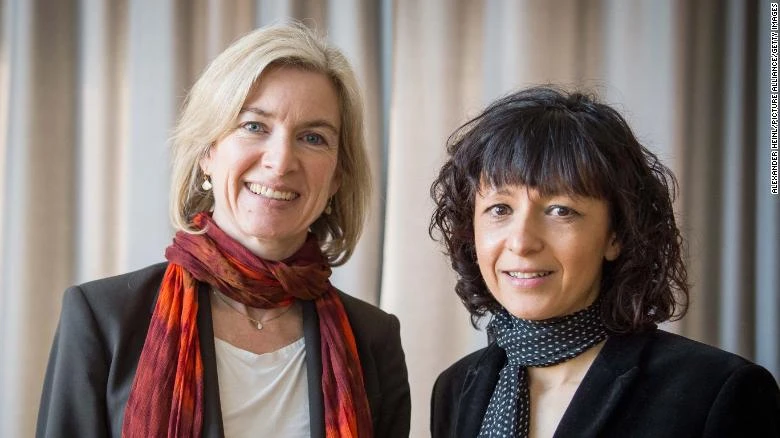
Jennifer A DoudnaBiography: Jennifer A. Doudna is a professor at the University of California Berkeley and a faculty scientist at the Department of Energy’s Lawrence Berkeley National Laboratory (Berkeley Lab). She is one of the biggest names in CRISPR, as she is credited as the co-inventor of CRISPR. She was also the first to propose that enzymes from bacteria that control microbial immunity (CRISPR-Cas9) could be used for programmable editing of genomes.
Awards: Prior to receiving the Nobel Prize in 2020, Dr. Doudna has been the recipient of many other prestigious awards such as the Breakthrough Prize in Life Sciences, the Wolf Prize in Medicine, and the NAS Award in Chemical Sciences among a plethora of other awards for her outstanding contributions to the life sciences field.
Quotes: "Go for your biggest and most exciting ideas and don’t let anyone tell you that it won’t work’ -Dr. Doudna
Biography: Jennifer A. Doudna is a professor at the University of California Berkeley and a faculty scientist at the Department of Energy’s Lawrence Berkeley National Laboratory (Berkeley Lab). She is one of the biggest names in CRISPR, as she is credited as the co-inventor of CRISPR. She was also the first to propose that enzymes from bacteria that control microbial immunity (CRISPR-Cas9) could be used for programmable editing of genomes.
Awards: Prior to receiving the Nobel Prize in 2020, Dr. Doudna has been the recipient of many other prestigious awards such as the Breakthrough Prize in Life Sciences, the Wolf Prize in Medicine, and the NAS Award in Chemical Sciences among a plethora of other awards for her outstanding contributions to the life sciences field.
Quotes: "Go for your biggest and most exciting ideas and don’t let anyone tell you that it won’t work’ -Dr. Doudna
Emmanuelle CharpentierBiography: Emmanuelle Charpentier is the founder, scientific and managing director of the Max Planck Unit for the Science of Pathogens, Berlin. She is also the co-founder of CRISPR along with Doudna.
Awards: Apart from being the Nobel Prize winner in 2020, Dr. Charpentier has won many other awards for her contributions to the genome engineering field. The Breakthrough Prize in Life Sciences award, the Harvey Prize, and the Gruber Prize in Genetics
are a few of the awards she has received.
Quotes: “I haven't changed, and I won't change. The scientist that I am got me here, and that is the scientist that I want to remain.” - Dr. Charpentier to Nature.
Biography: Emmanuelle Charpentier is the founder, scientific and managing director of the Max Planck Unit for the Science of Pathogens, Berlin. She is also the co-founder of CRISPR along with Doudna.
Awards: Apart from being the Nobel Prize winner in 2020, Dr. Charpentier has won many other awards for her contributions to the genome engineering field. The Breakthrough Prize in Life Sciences award, the Harvey Prize, and the Gruber Prize in Genetics
are a few of the awards she has received.
Quotes: “I haven't changed, and I won't change. The scientist that I am got me here, and that is the scientist that I want to remain.” - Dr. Charpentier to Nature.
Other Scientists Who Significantly Contributed To The Emergence CRISPR As The Powerful Tool
CRISPR is a novel DNA editing tool that is faster, more cost-efficient, and more accurate than any previous gene editing techniques. CRISPR has proven to be a powerful research tool contributing significantly to genetic research by allowing scientists to better understand biological processes associated with certain diseases.
Jennifer Doudna recently said “In any prize in the world of science, there are many people who contribute along the way and that certainly is true in the case of CRISPR”. Not one, but many CRISPR scientists, who played a vital role in the development of this technology. Listed below are some of the big names in CRISPR that deserve the recognition.
Feng ZhangFeng Zhang was the first to expand the application of CRISPR for gene editing in eukaryotic cells., as shown in his seminal 2013 paper. His lab's current focus is on developing tools that can be applied to study genetic diseases and the application of CRISPR in diagnostics and therapeutics. Zhang's team was also the first to show CRISPR nucleases that can target RNA. The team recently made news with their CRISPR-based COVID-19 diagnostic test using SHERLOCK technology.
Feng Zhang was the first to expand the application of CRISPR for gene editing in eukaryotic cells., as shown in his seminal 2013 paper. His lab's current focus is on developing tools that can be applied to study genetic diseases and the application of CRISPR in diagnostics and therapeutics. Zhang's team was also the first to show CRISPR nucleases that can target RNA. The team recently made news with their CRISPR-based COVID-19 diagnostic test using SHERLOCK technology.
Francisco MojicaFrancisco Mojica is the humble microbiologist from the University of Alicante, Spain, credited as the person who discovered that sequences of DNA had repeats in them, with regularly-spaced intervals. He called this concept CRISPR, or “Clustered-Regularly-Interspaced-Short-Palindromic-Repeats”. His discovery of this concept was incredibly important as it paved the way for all future work done with CRISPR.
Francisco Mojica is the humble microbiologist from the University of Alicante, Spain, credited as the person who discovered that sequences of DNA had repeats in them, with regularly-spaced intervals. He called this concept CRISPR, or “Clustered-Regularly-Interspaced-Short-Palindromic-Repeats”. His discovery of this concept was incredibly important as it paved the way for all future work done with CRISPR.
Virginijus ŠikšnysVirginijus Šikšnys was also one of the first researchers to show how CRISPR works. Šikšnys is a biochemist from Lithuania who independently figured out how certain bacteria are able to cut and paste specific genes from other organisms. He and his colleagues also found a way to control the process. Luck played a huge role in his research not getting as much attention as Doudna’s did. The paper he submitted to Cell in April 2012 was rejected, while Doudna’s paper was published in Science two months later, fetching her celebrity status in the CRISPR field. Doudna, Charpentier, and Šikšnys recently won the Kavli Prize for their work with CRISPR, and there’s plenty more recognition to come for this groundbreaking development in genetic science.
Virginijus Šikšnys was also one of the first researchers to show how CRISPR works. Šikšnys is a biochemist from Lithuania who independently figured out how certain bacteria are able to cut and paste specific genes from other organisms. He and his colleagues also found a way to control the process. Luck played a huge role in his research not getting as much attention as Doudna’s did. The paper he submitted to Cell in April 2012 was rejected, while Doudna’s paper was published in Science two months later, fetching her celebrity status in the CRISPR field. Doudna, Charpentier, and Šikšnys recently won the Kavli Prize for their work with CRISPR, and there’s plenty more recognition to come for this groundbreaking development in genetic science.
Other Early CRISPR ContributorsIn 2008, Luciano Marraffini was a postdoc in Dr. Erik Sontheimer's lab at Northwestern University, when he discovered that CRISPR blocked conjugation in Staphylococcus epidermidis. Together, Marraffini and Sontheimer recognized that CRISPR involved a programmable restriction enzyme that targeted the DNA. Back in 2007, Rodolphe Barrangou was the first scientist to demonstrate the immune function of CRISPR. Since then, he has collaborated with Doudna on research involving Cas9 guided RNA characterization. Another name that shouldn’t be forgotten when we mention CRISPR is Jillian Banfield. It was Banfield who first reached out to Doudna to collaborate on a project when she inadvertently got her intrigued about CRISPR.
In 2008, Luciano Marraffini was a postdoc in Dr. Erik Sontheimer's lab at Northwestern University, when he discovered that CRISPR blocked conjugation in Staphylococcus epidermidis. Together, Marraffini and Sontheimer recognized that CRISPR involved a programmable restriction enzyme that targeted the DNA. Back in 2007, Rodolphe Barrangou was the first scientist to demonstrate the immune function of CRISPR. Since then, he has collaborated with Doudna on research involving Cas9 guided RNA characterization. Another name that shouldn’t be forgotten when we mention CRISPR is Jillian Banfield. It was Banfield who first reached out to Doudna to collaborate on a project when she inadvertently got her intrigued about CRISPR.
Advancement of Gene Editing: Review of Past Winners of Nobel Prize Winners in GeneticsWe are in the midst of a genome editing revolution. But we didn’t get here in a day. The advances of today are the result of years of hard work of many scientists along the way. Listed below are the Nobel Prize winners who have contributed to the genome editing field with their groundbreaking research.
We are in the midst of a genome editing revolution. But we didn’t get here in a day. The advances of today are the result of years of hard work of many scientists along the way. Listed below are the Nobel Prize winners who have contributed to the genome editing field with their groundbreaking research.
Francis Crick, James Watson, Maurine Wilkins
Year: 1962
Prize: Physiology or Medicine
Project: Discoveries associated with the molecular structure of nucleic acids and its significance for information transfer in living material.
Francis Crick, James Watson, and Maurine Wilkins were the biologists that discovered the double helix structure of DNA molecules, and that this code is important for information transfer determining an organism's attributes. They also demonstrated how these molecules were able to self-replicate.
Rosalind Franklin is another name worth mentioning in the discovery of the DNA structure, even though she did not receive the accolade she deserved for it. Her X-ray diffraction studies produced two sets of high-resolution images of crystallized DNA fibers, which were crucial to the eventual discovery of the double helix structure by Crick and others.
Paul Berg, Walter Gilbert, Frederick Sanger
Year: 1980
Prize: Chemistry
Project: Study of the biochemistry of nucleic acids—recombinant-DNA in particular—and the determination of base sequences in nucleic acids.
Paul Berg, Walter Gilbert, and Frederick Sanger shared a Nobel Prize for their contribution to the determination of base sequences in nucleic acids. They were also able to establish the number of genes in the human body and their functions. Berg received half of the prize for his contributions concerning the biochemistry of nucleic acids and recombinant-DNA, while Gilbert and Sanger shared half of the Nobel prize for their contributions determining the base sequences of nucleic acids.
Barbara McClintock
Year: 1983
Prize: Physiology or Medicine
Project: Discovery of mobile genetic elements.
Barbara McClintock, through the study of hereditary genetic characteristics of corn, discovered that some parts of DNA have mobility within the genome. She proved that when genetic elements change position within a chromosome, this might affect nearby genes, and cause them to become active or inactive.
Sydney Brenner, H. Robert Horvitz, John E. Sulston
Year: 2002
Prize: Physiology or Medicine
Project: Genetic regulation of organ development and programmed cell death.
The human body amazingly controls its own cell turnover, killing off old cells and generating healthy ones to maintain the appropriate number of cells in the tissues. This controlled elimination of cells is called programmed cell death. Sydney Brenner, H. Robert Horvitz, and John E. Sulston shared the Nobel Prize for identifying key genes regulating organ development and programmed cell death.
Roger D. Kornberg
Year: 2006
Prize: Chemistry
Project: Study of the molecular basis of eukaryotic transcription.
Roger D. Kornberg successfully mapped the process of information transfer from DNA to RNA. He studied yeast bacteria in order to create the map, and also determined the structure of the enzyme (RNA polymerase) that is required for the process, and created images of the construction of the RNA molecule.
Andrew Z. Fire and Craig C. Mello
Year: 2006
Prize: Physiology or Medicine
Project: Discovered RNA interference - gene silencing by double-stranded RNA.
Andrew Z. Fire and Craig C. Mello discovered that in cases where RNA has a double-stranded structure, some genetic information may be "blocked," resulting in those genes not being expressed. The phenomenon they discovered is now known as RNA interference or RNAi.
Mario R. Capecchi, Sir Martin J. Evans, Oliver Smithies
Year: 2007
Prize: Physiology or Medicine
Project: Discovery of principles for introducing specific gene modifications in mice by the use of embryonic stem cells.
Mario R. Capecchi, Sir Martin J. Evans, and Oliver Smithies won the prize for their groundbreaking work in genetic modification of mice. By modifying and inactivating certain genes with stem cells, they were able to determine their function.
Elizabeth H. Blackburn, Carol W. Greider, Jack W. Szostak
Year: 2009
Prize: Physiology or Medicine
Project: Discovery of how chromosomes are protected by telomeres and the enzyme telomerase.
On the end of each strand of DNA are small segments known as telomeres. Elizabeth H. Blackburn, Carol W. Greider, and Jack W. Szostak discovered that telomeres are a protective element of DNA that indicate which parts of a strand of DNA are disposable. This discovery solved a major problem in biology by showing how the chromosomes could be copied during cell divisions, and how they are protected against degradation.
Venkatraman Ramakrishnan, Thomas A. Steitz, Ada E. Yonath
Year: 2009
Prize: Chemistry
Project: Studies on the structure and function of the ribosome.
Venkataraman Ramakrishnan, Thomas A. Steitz, and Ada E. Yonath shared the prize for their work uncovering the functions and structure of the ribosome. They were able to map the structure of ribosomes using X-ray crystallography. This discovery has been useful for the advancement of antibiotics.
Sir John B. Gurdon and Shinya Yamanaka
Year: 2012
Prize: Physiology or Medicine
Project: Discovered that mature cells can be reprogrammed to become pluripotent.
In 1962, Sir John B. Gurdon discovered that the specialization of cells was reversible. Over 40 years later, Shinya Yamanaka discovered in 2006 that intact mature cells in mice could be reprogrammed to become immature stem cells (pluripotent cells). These cells could be developed into a variety of cell types, so these groundbreaking discoveries have allowed scientists to reprogram human cells, study diseases, and develop methods for diagnosis and therapy.
Tomas Lindahl, Paul Modrich, Aziz Sancar
Year: 2015
Prize: Chemistry
Project: Mechanistic studies of DNA repair.
The research done by Tomas Lindahl, Paul Modrich, and Aziz Sancar resulted in an eye-opening development in scientific knowledge of how living cells function. They were able to map the process of how cells repair DNA strands at a molecular level and safeguard genetic information. Their work has provided fundamental insights into how cells function, and how this can be used in the development of new treatment strategies.
James P. Allison and Tasuku Honjo
Year: 2018
Prize: Physiology or Medicine
Project: Discovery of cancer therapy by inhibition of negative immune regulation.
James P. Allison and Tasuku Honjo made a groundbreaking discovery that by inhibiting our bodies' "brakes" in the immune system, the body can begin to fight off tumor cells on its own. Their joint discoveries helped successfully develop new treatments for cancer and earned them the Nobel Prize in 2018.
Frances H. Arnold, George P. Smith, Sir Gregory P. Winter
Year: 2018
Prize: Chemistry
Project: Directed evolution of enzymes; phage display of peptides and antibodies.
These Nobel Prize Laureates found a way to harness the power of evolution and control it in a way that will benefit humans in generations to come. Frances H. Arnold received one half of the prize for developing a method for the controlled evolution of enzymes, while George P. Smith and Sir Gregory P. Winter shared the remaining half for their work creating phage display—a method for creating antibodies now used in the production of pharmaceuticals.
If you are interested in learning more about CRISPR science, be sure to follow CRISPR in the news. You can also catch up with us on our blog, or follow us on Twitter or Facebook!
